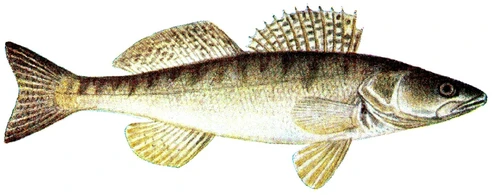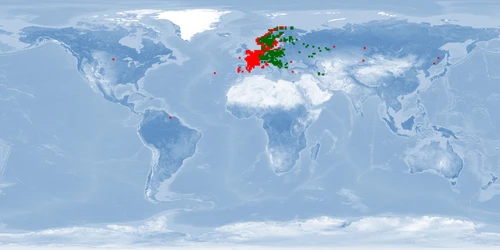Information
Authors: Jenny Volstorf, Tanya Slosberg
Version: B | 1.1Published: 2022-01-22
1 Remarks
1.1 General remarks
Escapees and consequences: negative or at most unpredictable for the local ecosystem1.2 Other remarks
No data found yet.2 Ethograms
In the farm or lab: on feeding, reproduction
3 Distribution
Introduced: Europe, inland waters
4 Natural co-existence
5 Substrate and/or shelter
5.1 Substrate
Substrate range, substrate preference: lives over sand and fine substrate5.2 Shelter or cover
Shelter or cover preference: uses shelter during hunting (further research needed)6 Food, foraging, hunting, feeding
6.1 Trophic level and general considerations on food needs
Trophic level: 4.0Impacts of feed fishery: contributes to overfishing, challenges animal welfare
6.2 Food items
Food items, food preference: carnivorous, cannibalistic at times; increasing prey size with increasing age6.3 Feeding behaviour
Feeding style, foraging mode: predator, hunterEffects on feeding: direct relation with temperature
7 Photoperiod
7.1 Daily rhythm
Daily rhythm: individual differences: crepuscular, nocturnal, diurnalPhotoperiod and stress: 24 h darkness is stressful (further research needed)
7.2 Light intensity
Light intensity preference: 1 lux (further research needed)Light intensity and growth: inverse relation (further research needed)
7.3 Light colour
Light colour and growth: highest under red light (further research needed)8 Water parameters
8.1 Water temperature
Standard temperature range, temperature preference: 0-27 °C, capable of surviving under ice cover (further research needed)Temperature and growth: optimally 23 °C (further research needed)
8.2 Oxygen
Dissolved oxygen range: 5.5-12.9 mg/L8.3 Salinity
Salinity tolerance, standard salinity range: probably euryhaline (further research needed), 0.03-10+ pptSalinity and growth: depends on water temperature (further research needed)
8.4 pH
Standard pH range: 6.5-6.9 (further research needed)8.5 Turbidity
Standard turbidity range: Secchi depth 0.4-10 m8.6 Water hardness
No data found yet.8.7 NO4
No data found yet.8.8 Other
No data found yet.9 Swimming
9.1 Swimming type, swimming mode
Swimming type, swimming mode: sub-carangiform9.2 Swimming speed
Swimming speed: max 1.6 body lengths/s (further research needed)Standard velocity range, velocity preference: 0.01-0.9 cm/s, decreasing with decreasing temperatures (further research needed)
9.3 Home range
Home range: average 0.2-6.3 km, range 0-7.7 km9.4 Depth
Depth range, depth preference: range 0-30.8 m, moves deeper during the day probably to avoid predators9.5 Migration
Migration type: semi-anadromous10 Growth
10.1 Ontogenetic development
Mature egg: 0.7-0.9 mmLarvae: hatching to 4 days (further research needed)
Fry: beginning of exogenous feeding, 4-48 days, 5.6-15 mm, 0.5-60 mg
Juveniles, sexual maturity: fully developed (48 days) to beginning of maturity (1-3 years), 4-32.2+ cm, 0.5-553 g
Maturation and manipulation: ambient temperatures promote maturation (further research needed)
Adults: 4-14 years, 31-130 cm, 0.7-18 kg
10.2 Sexual conversion
No data found yet.10.3 Sex ratio
No data found yet.10.4 Effects on growth
Growth rate: 51 mm/year for large juveniles (further research needed)Growth and size-grading: no effect (further research needed)
For growth and...
...light intensity → D15,
...light colour → D16,
...water temperature → D17,
...salinity → D18,
...stocking density → D19.
10.5 Deformities and malformations
Deformities and malformations: non-inflated swim bladders (further research needed)11 Reproduction
11.1 Nest building
Nest building: male builds nest in sand or gravel or uses artificial substitute11.2 Attraction, courtship, mating
Attraction: intensified body colour, iridescent stripe, swollen opercular in males, swollen genitals in females (further research needed)Courtship sequence: male and female encircle nest, male body colour and marking changes (further research needed)
11.3 Spawning
Spawning conditions: February-May, 10-15 °C, at any time of the dayMale:female ratio resulting in spawning, composition of the broodstock: 1:1 (further research needed)
Spawning sequence: female spawns close to nest, male 7 s later during 1-3 sessions (further research needed)
11.4 Fecundity
Female fecundity: average 140,000-255,000 eggs/kg body weightMale fecundity: 1-3 times per spawning (further research needed)
11.5 Brood care, breeding
Breeding type: gravel breeder12 Senses
12.1 Vision
Visible spectrum: green, red (further research needed)Importance of vision: hunting (further research needed)
12.2 Olfaction (and taste, if present)
No data found yet.12.3 Hearing
No data found yet.12.4 Touch, mechanical sensing
No data found yet.12.5 Lateral line
No data found yet.12.6 Electrical sensing
No data found yet.12.7 Nociception, pain sensing
No data found yet.12.8 Other
No data found yet.13 Communication
13.1 Visual
No data found yet.13.2 Chemical
No data found yet.13.3 Acoustic
No data found yet.13.4 Mechanical
No data found yet.13.5 Electrical
No data found yet.13.6 Other
No data found yet.14 Social behaviour
14.1 Spatial organisation
Aggregation type: no school (further research needed)Stocking density and stress: direct relation from >50 ind/L on (further research needed)
Stocking density and growth: inverse relation from >50 ind/L on (further research needed)
14.2 Social organisation
No data found yet.14.3 Exploitation
Cannibalism, predation: prevalent14.4 Facilitation
Cooperation, mutualism: attacks in packs (further research needed)14.5 Aggression
No data found yet.14.6 Territoriality
No data found yet.15 Cognitive abilities
15.1 Learning
No data found yet.15.2 Memory
No data found yet.15.3 Problem solving, creativity, planning, intelligence
No data found yet.15.4 Other
No data found yet.16 Personality, coping styles
17 Emotion-like states
17.1 Joy
No data found yet.17.2 Relaxation
No data found yet.17.3 Sadness
No data found yet.17.4 Fear
No data found yet.18 Self-concept, self-recognition
19 Reactions to husbandry
19.1 Stereotypical and vacuum activities
No data found yet.19.2 Acute stress
Handling: collection and anaesthesia is stressful (further research needed)Confinement: stressful if done for 1 h (further research needed)
Live transport: stressful (further research needed)
19.3 Chronic stress
Handling: delays or prevents spawning despite adaptation to repeated stress (further research needed)For chronic stress and...
...PHOTOPERIOD → D24,
...stocking density → D23.
19.4 Stunning reactions
Stunning rules: fast, effective, safeStunning methods: electrical stunning most effective (further research needed)
Glossary
FARM = setting in farming environment or under conditions simulating farming environment in terms of size of facility or number of individuals
FOOD CONVERSION RATIO = (food offered / weight gained)
FRY = larvae from external feeding on
IND = individuals
JUVENILES = fully developed but immature individuals
LAB = setting in laboratory environment
MILLIARD = 1,000,000,000 29 30
PHOTOPERIOD = duration of daylight
TOTAL LENGTH = from snout to tip of caudal fin as compared to fork length (which measures from snout to fork of caudal fin) or standard length (from head to base of tail fin) or body length (from the base of the eye notch to the posterior end of the telson) 41
WILD = setting in the wild
Bibliography
2 Innal, Deniz, and Füsun Erk’akan. 2006. Effects of exotic and translocated fish species in the inland waters of Turkey. Reviews in Fish Biology and Fisheries 16: 39–50. https://doi.org/10.1007/s11160-006-9005-y.
3 Greenberg, Larry A., Cynthia A. Paszkowski, and William M. Tonn. 1995. Effects of Prey Species Composition and Habitat Structure on Foraging by Two Functionally Distinct Piscivores. Oikos 74: 522–532. https://doi.org/10.2307/3545998.
4 Linfield, R.S.J., and R.B. Rickards. 1979. The Zander in Perspective. Aquaculture Research 10: 1–16. https://doi.org/10.1111/j.1365-2109.1979.tb00249.x.
5 Poulet, Nicolas, Céline Arzel, Samir Messad, Sovan Lek, and Christine Argillier. 2005. Diel activity of adult pikeperch Sander lucioperca (L.) in a drainage canal in the Mediterranean basin during spring. Hydrobiologia 543: 79–90. https://doi.org/10.1007/s10750-004-6823-6.
6 Horký, Pavel, Ondřej Slavík, and Ludĕk Bartoš. 2008. A telemetry study on the diurnal distribution and activity of adult pikeperch, Sander lucioperca (L.), in a riverine environment. Hydrobiologia 614: 151. https://doi.org/10.1007/s10750-008-9503-0.
7 Nyberg, Per, Erik Degerman, and Berit Sers. 1996. Survival after catch in trap-nets, movements and growth of the pikeperch (Stizostedion lucioperca) in Lake Hjälmaren, Central Sweden. Annales Zoologici Fennici 33: 569–575.
8 Ložys, Linas. 2003. Seasonal Migrations of Pikeperch (Sander Lucioperca L.) from the Curonian Lagoon to the Baltic Sea and Advantages of the Phenomenon. Acta Zoologica Lituanica 13: 188–194. https://doi.org/10.1080/13921657.2003.10512562.
9 Vehanen, T., and M. Lahti. 2003. Movements and habitat use by pikeperch (Stizostedion lucioperca (L.)) in a hydropeaking reservoir. Ecology of Freshwater Fish 12: 203–215. https://doi.org/10.1034/j.1600-0633.2003.00026.x.
10 Turesson, H., and C. Brönmark. 2004. Foraging behaviour and capture success in perch, pikeperch and pike and the effects of prey density. Journal of Fish Biology 65: 363–375. https://doi.org/10.1111/j.0022-1112.2004.00455.x.
11 Drasovean, Alexandru G., and Flavius C. Blidariu. 2013. The Naturally Conducted Reproductive Behavior of Sander Lucioperca L. Bulletin of University of Agricultural Sciences and Veterinary Medicine Cluj-Napoca. Animal Science and Biotechnologies 70: 255–262. https://doi.org/10.15835/buasvmcn-asb:70:2:9497.
12 Lappalainen, Jyrki, Mikko Olin, and Mika Vinni. 2006. Pikeperch cannibalism: effects of abundance, size and condition. Annales Zoologici Fennici 43: 35–44.
13 Hyvärinen, P., V. Leppäniemi, K. Johansson, P. Korhonen, and P. Suuronen. 2008. Stress and survival of small pike-perch Sander lucioperca (L.) after trawling and chilling. Journal of Fish Biology 72: 2677–2688. https://doi.org/10.1111/j.1095-8649.2008.01885.x.
14 Falahatkar, Bahram, Sobhan R. Akhavan, Iraj Efatpanah, and Bahman Meknatkhah. 2012. Primary and Secondary Responses of Juveniles of a Teleostean, Pikeperch Sander lucioperca, and a Chondrostean, Persian Sturgeon Acipenser persicus, to Handling during Transport. North American Journal of Aquaculture 74: 241–250. https://doi.org/10.1080/15222055.2012.675988.
15 Horký, Pavel, Ondřej Slavík, Ludĕk Bartoš, Jitka KOLÁŘOVÁ, and Tomáš RANDÁK. 2006. The effect of the moon phase and seasonality on the behaviour of pikeperch in the Elbe River. Folia Zoologica (Czech Republic) 55: 411–417.
16 Poulet, Nicolas, Stéphane Forgeois, Alain J. Crivelli, Sovan Lek, and Christine Argillier. 2004. Life history traits of the pikeperch Sander lucioperca (L.) in the southern outskirt of its distribution area. In Proceedings of Percis III: The Third International Percid Fish Symposium. University of Wisconsin Sea Grant Institute.
17 KratochvíL, Michal, Martin čEch, Mojmír VašEk, Jan KubečKa, Josef Hejzlar, Josef MatěNa, Jiří Peterka, Jiří MacháčEk, and Jaromír SeďA. 2010. Diel vertical migrations of age 0+ percids in a shallow, well-mixed reservoir. Journal of Limnology 69: 305. https://doi.org/10.4081/jlimnol.2010.305.
18 Szkudlarek, Maciej, and Zdzisław Zakęś. 2007. Effect of stocking density on survival and growth performance of pikeperch, Sander lucioperca (L.), larvae under controlled conditions. Aquaculture International 15: 67–81. https://doi.org/10.1007/s10499-006-9069-7.
19 Fatemeh, Abbasi, Ghafori Sanaz, and Jamili Shahla. 2008. Plasma cortisol changes and body composition in Stizostedion lucioperca exposed to handling stress. Pakistan journal of biological sciences: PJBS 11: 623–627.
20 Copp, Gordon H., Keith J. Wesley, Vladimir Kovac, Mark J. Ives, and Matthew G. Carter. 2003. Introduction and establishment of the pikeperch Stizostedion lucioperca (L.) in Stanborough Lake (Hertfordshire) and its dispersal in the Thames catchment. The London Naturalist 82: 139–154.
21 Argillier, Christine, Marc Barral, and Pascal Irz. 2012. Growth and diet of the pikeperch Sander lucioperca (L.) in two French reservoirs. Archives of Polish Fisheries 20: 191–200. https://doi.org/10.2478/v10086-012-0024-0.
22 Balik, Ísmet, Hidir Çubuk, Belgin Karasahin, Remziye Özkök, Rahmi Uysal, and Ahmet Alp. 2006. Food and Feeding Habits of the Pikeperch, Sander lucioperca (Linnaeus, 1758), Population from Lake Eğirdir (Turkey). Turkish Journal of Zoology 30: 19–26.
23 Özyurt, Caner Enver, Erhan Akamca, and Sinan Mavruk. 2011. Spawning, Maturity Length and Size Selectivity for Pikeperch (Sander lucioperca) in Seyhan Dam Lake. Journal of Animal and Veterinary Advances 10: 545–551.
24 Froese, R., and D. Pauly. 2014. FishBase. World Wide Web electronic publication. www.fishbase.org.
25 FAO. 2014. The State of World Fisheries and Aquaculture 2014. Rome: Food and Agriculture Organization of the United Nations.
26 Watson, R., Jackie Alder, and Daniel Pauly. 2006. Fisheries for forage fish, 1950 to the present. In On the Multiple Uses of Forage Fish: from Ecosystems to Markets, ed. Jackie Alder and Daniel Pauly, 14:1–20. Fisheries Centre Research Reports 3. Vancouver, Canada: Fisheries Centre, University of British Columbia.
27 Mood, A. 2012. Average annual fish capture for species mostly used for fishmeal (2005-2009). fishcount.org.uk.
28 Mood, A., and P. Brooke. 2012. Estimating the Number of Farmed Fish Killed in Global Aquaculture Each Year.
29 Kopf, Von Kristin. 2012. Milliarden vs. Billionen: Große Zahlen. Sprachlog.
30 Weisstein, Eric W. 2018. Milliard. Text. MathWorld - a Wolfram Web resource. http://mathworld.wolfram.com/Milliard.html. Accessed February 2.
31 Stark, T. 1969. Unpublished data.
32 Steffens, Werner, Franz Geldhauser, Peter Gerstner, and Volker Hilge. 1996. German experiences in the propagation and rearing of fingerling pikeperch (Stizostedion lucioperca). Annales Zoologici Fennici 33: 627–634.
33 Pourhosein Sarameh, Sara, Bahram Falahatkar, Ghobad Azari Takami, and Iraj Efatpanah. 2013. Physiological changes in male and female pikeperch Sander lucioperca (Linnaeus, 1758) subjected to different photoperiods and handling stress during the reproductive season. Fish Physiology and Biochemistry 39: 1253–1266. https://doi.org/10.1007/s10695-013-9780-z.
34 Luchiari, Ana Carolina, Fulvio Aurélio De Morais Freire, Juha Koskela, and Juhani Pirhonen. 2006. Light intensity preference of juvenile pikeperch Sander lucioperca (L.). Aquaculture Research 37: 1572–1577. https://doi.org/10.1111/j.1365-2109.2006.01599.x.
35 Kozłowski, Michał, Zdzisław Zakęś, Mirosław Szczepkowski, Krzysztof Wunderlich, Iwona Piotrowska, and Bożena Szczepkowska. 2010. Impact of light intensity on the results of rearing juvenile pikeperch, Sander lucioperca (L.), in recirculating aquaculture systems. Archives of Polish Fisheries 18: 77–84. https://doi.org/10.2478/v10086-010-0009-9.
36 Luchiari, Ana Carolina, Fulvio Aurélio De Morais Freire, Juhani Pirhonen, and Juha Koskela. 2009. Longer wavelengths of light improve the growth, intake and feed efficiency of individually reared juvenile pikeperch Sander lucioperca (L.). Aquaculture Research 40: 880–886. https://doi.org/10.1111/j.1365-2109.2008.02160.x.
37 Rennert, B., M. Wirth, S. Günther, and C. Schulz. 2005. Effect of feeding under-year zander (Sander lucioperca) on size, body mass and body composition before and after wintering. Journal of Applied Ichthyology 21: 429–432. https://doi.org/10.1111/j.1439-0426.2005.00665.x.
38 Hermelink, B., S. Wuertz, A. Trubiroha, B. Rennert, W. Kloas, and C. Schulz. 2011. Influence of temperature on puberty and maturation of pikeperch, Sander lucioperca. General and Comparative Endocrinology 172: 282–292. https://doi.org/10.1016/j.ygcen.2011.03.013.
39 Prochorova, I. 2003. Personal communication.
40 Hunt, Darcie Elizabeth. 2015. The effect of visual capacity and swimming ability of fish on the performance of light-based bycatch reduction devices in prawn trawls. Doctoral dissertation, University of Tasmania.
41 Pawson, M.G., and G.D. Pickett. 1996. The Annual Pattern of Condition and Maturity in Bass, Dicentrarchus Labrax, in Waters Around England and Wales. Journal of the Marine Biological Association of the United Kingdom 76: 107. https://doi.org/10.1017/S0025315400029040.
42 Szczepkowski, M., Zdzislaw Zakes, B. Szczepkowska, and I. Piotrowska. 2011. Effect of size sorting on the survival, growth and cannibalism in pikeperch (Sander lucioperca L.) larvae during intensive culture in RAS. Czech Journal of Animal Science 56: 483–489.
43 Grozea, Adrian, Alexandru Draşovean, Dacian Lalescu, Gál Denes, Ludovic Toma Cziszter, and Romeo Teodor Cristina. 2016. The Pike Perch (Sander lucioperca) Background Color First Choice in the Recirculating Aquaculture Systems. Turkish Journal of Fisheries and Aquatic Science 16: 891–897. https://doi.org/10.4194/1303-2712-v16_4_16.
44 Zakęś, Zdzisław. 2012. Cultured Aquatic Species Information Programme. Sander lucioperca. Rome: FAO Fisheries and Aquaculture Department.
45 Llonch, P., E. Lambooij, H.G.M. Reimert, and J.W. van de Vis. 2012. Assessing effectiveness of electrical stunning and chilling in ice water of farmed yellowtail kingfish, common sole and pike-perch. Aquaculture 364–365: 143–149. https://doi.org/10.1016/j.aquaculture.2012.08.015.
46 Pourhosein Sarameh, Sara, Bahram Falahatkar, Ghobad Azari Takami, and Iraj Efatpanah. 2012. Effects of different photoperiods and handling stress on spawning and reproductive performance of pikeperch Sander lucioperca. Animal Reproduction Science 132: 213–222. https://doi.org/10.1016/j.anireprosci.2012.05.011.
47 Freyhof, J., and M. Kottelat. 2008. Sander lucioperca. e. T20860A9231839. The IUCN Red List of Threatened Species. International Union for Conservation of Nature.
48 Robb, D H F, and S C Kestin. 2002. Methods Used to Kill Fish: Field Observations and Literature Reviewed. Animal Welfare 11: 269–282.
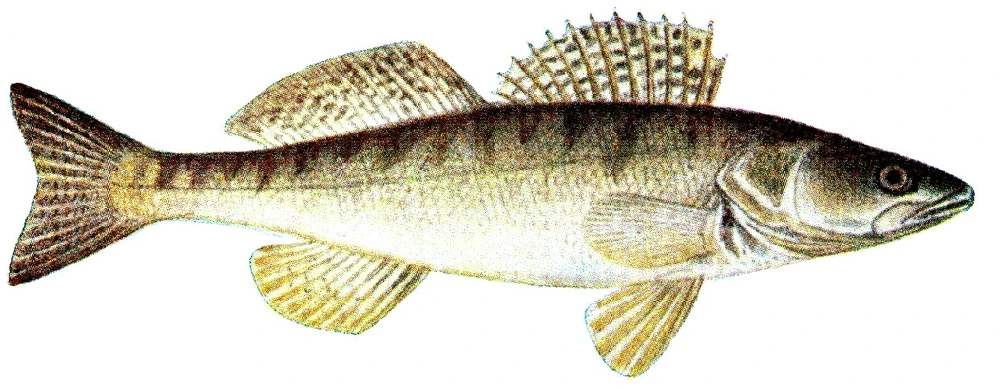
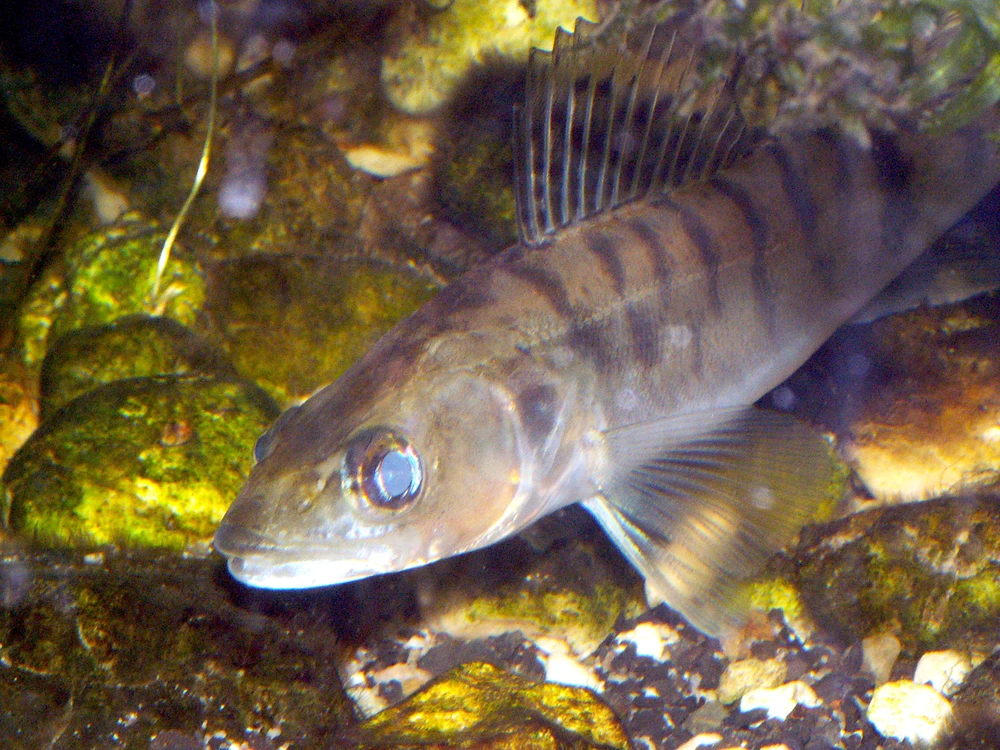
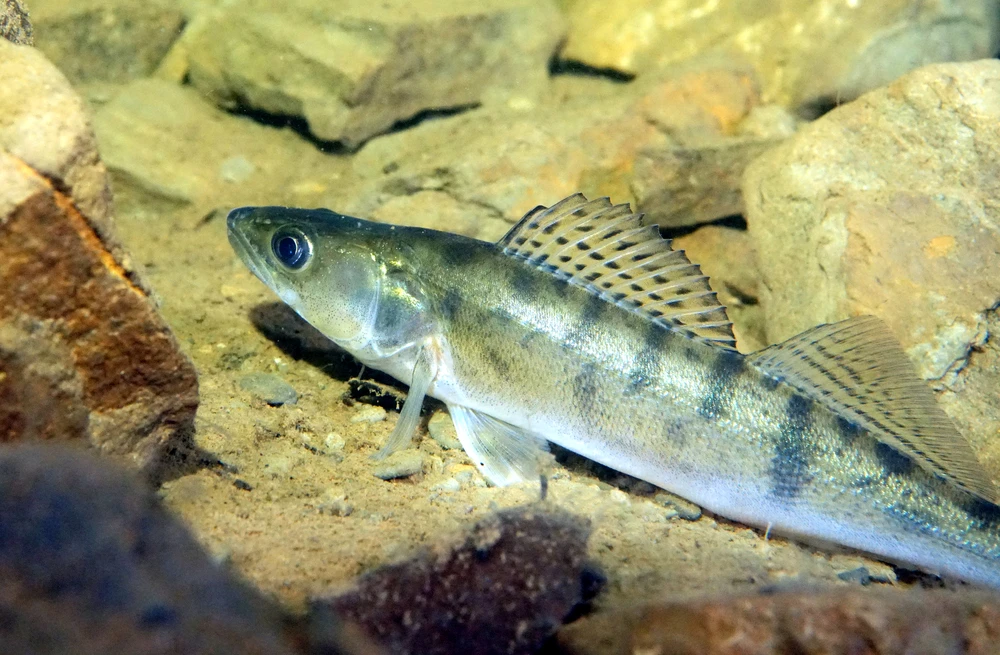
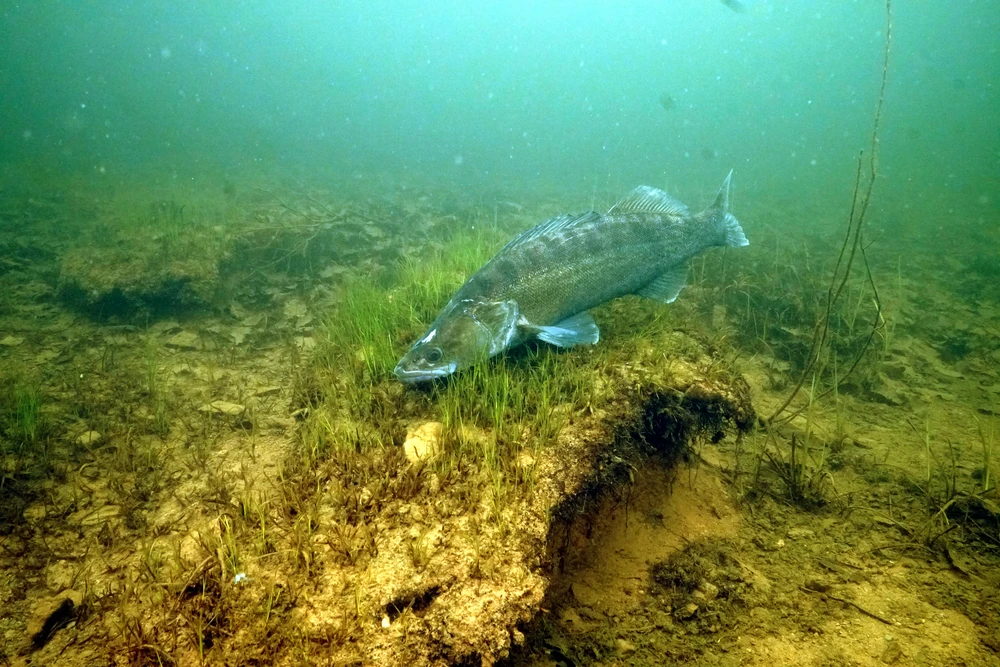






Probably, we updated the profile. Check the version number in the head of the page. For more information on the version, see the FAQ about this. Why do we update profiles? Not just do we want to include new research that has come out, but we are continuously developing the database itself. For example, we changed the structure of entries in criteria or we added explanations for scores in the WelfareCheck | farm. And we are always refining our scoring rules.
The centre of the Overview is an array of criteria covering basic features and behaviours of the species. Each of this information comes from our literature search on the species. If we researched a full Dossier on the species, probably all criteria in the Overview will be covered and thus filled. This was our way to go when we first set up the database.
Because Dossiers are time consuming to research, we switched to focusing on WelfareChecks. These are much shorter profiles covering just 10 criteria we deemed important when it comes to behaviour and welfare in aquaculture (and lately fisheries, too). Also, WelfareChecks contain the assessment of the welfare potential of a species which has become the main feature of the fair-fish database over time. Because WelfareChecks do not cover as many criteria as a Dossier, we don't have the information to fill all blanks in the Overview, as this information is "not investigated by us yet".
Our long-term goal is to go back to researching Dossiers for all species covered in the fair-fish database once we set up WelfareChecks for each of them. If you would like to support us financially with this, please get in touch at ffdb@fair-fish.net
See the question "What does "not investigated by us yet" mean?". In short, if we have not had a look in the literature - or in other words, if we have not investigated a criterion - we cannot know the data. If we have already checked the literature on a criterion and could not find anything, it is "no data found yet". You spotted a "no data found yet" where you know data exists? Get in touch with us at ffdb@fair-fish.net!
Once you have clicked on "show details", the entry for a criterion will unfold and display the summarised information we collected from the scientific literature – complete with the reference(s).
As reference style we chose "Springer Humanities (numeric, brackets)" which presents itself in the database as a number in a grey box. Mouse over the box to see the reference; click on it to jump to the bibliography at the bottom of the page. But what does "[x]-[y]" refer to?
This is the way we mark secondary citations. In this case, we read reference "y", but not reference "x", and cite "x" as mentioned in "y". We try to avoid citing secondary references as best as possible and instead read the original source ourselves. Sometimes we have to resort to citing secondarily, though, when the original source is: a) very old or not (digitally) available for other reasons, b) in a language no one in the team understands. Seldomly, it also happens that we are running out of time on a profile and cannot afford to read the original. As mentioned, though, we try to avoid it, as citing mistakes may always happen (and we don't want to copy the mistake) and as misunderstandings may occur by interpreting the secondarily cited information incorrectly.
If you spot a secondary reference and would like to send us the original work, please contact us at ffdb@fair-fish.net
In general, we aim at giving a good representation of the literature published on the respective species and read as much as we can. We do have a time budget on each profile, though. This is around 80-100 hours for a WelfareCheck and around 300 hours for a Dossier. It might thus be that we simply did not come around to reading the paper.
It is also possible, though, that we did have to make a decision between several papers on the same topic. If there are too many papers on one issue than we manage to read in time, we have to select a sample. On certain topics that currently attract a lot of attention, it might be beneficial to opt for the more recent papers; on other topics, especially in basic research on behaviour in the wild, the older papers might be the go-to source.
And speaking of time: the paper you are missing from the profile might have come out after the profile was published. For the publication date, please check the head of the profile at "cite this profile". We currently update profiles every 6-7 years.
If your paper slipped through the cracks and you would like us to consider it, please get in touch at ffdb@fair-fish.net
This number, for example "C | 2.1 (2022-11-02)", contains 4 parts:
- "C" marks the appearance – the design level – of the profile part. In WelfareChecks | farm, appearance "C" is our most recent one with consistent age class and label (WILD, FARM, LAB) structure across all criteria.
- "2." marks the number of major releases within this appearance. Here, it is major release 2. Major releases include e.g. changes of the WelfareScore. Even if we just add one paper – if it changes the score for one or several criteria, we will mark this as a major update for the profile. With a change to a new appearance, the major release will be re-set to 1.
- ".1" marks the number of minor updates within this appearance. Here, it is minor update 1. With minor updates, we mean changes in formatting, grammar, orthography. It can also mean adding new papers, but if these papers only confirm the score and don't change it, it will be "minor" in our book. With a change to a new appearance, the minor update will be re-set to 0.
- "(2022-11-02)" is the date of the last change – be it the initial release of the part, a minor, or a major update. The nature of the changes you may find out in the changelog next to the version number.
If an Advice, for example, has an initial release date and then just a minor update date due to link corrections, it means that – apart from correcting links – the Advice has not been updated in a major way since its initial release. Please take this into account when consulting any part of the database.
First up, you will find answers to questions for the specific page you are on. Scrolling down in the FAQ window, there are also answers to more general questions. Explore our website and the other sub pages and find there the answers to questions relevant for those pages.
In the fair-fish database, when you have chosen a species (either by searching in the search bar or in the species tree), the landing page is an Overview, introducing the most important information to know about the species that we have come across during our literatures search, including common names, images, distribution, habitat and growth characteristics, swimming aspects, reproduction, social behaviour but also handling details. To dive deeper, visit the Dossier where we collect all available ethological findings (and more) on the most important aspects during the life course, both biologically and concerning the habitat. In contrast to the Overview, we present the findings in more detail citing the scientific references.
Depending on whether the species is farmed or wild caught, you will be interested in different branches of the database.
Farm branch
Founded in 2013, the farm branch of the fair-fish database focuses on farmed aquatic species.
Catch branch
Founded in 2022, the catch branch of the fair-fish database focuses on wild-caught aquatic species.
The heart of the farm branch of the fair-fish database is the welfare assessment – or WelfareCheck | farm – resulting in the WelfareScore | farm for each species. The WelfareCheck | farm is a condensed assessment of the species' likelihood and potential for good welfare in aquaculture, based on welfare-related findings for 10 crucial criteria (home range, depth range, migration, reproduction, aggregation, aggression, substrate, stress, malformations, slaughter).
For those species with a Dossier, we conclude to-be-preferred farming conditions in the Advice | farm. They are not meant to be as detailed as a rearing manual but instead, challenge current farming standards and often take the form of what not to do.
In parallel to farm, the main element of the catch branch of the fair-fish database is the welfare assessment – or WelfareCheck | catch – with the WelfareScore | catch for each species caught with a specific catching method. The WelfareCheck | catch, too, is a condensed assessment of the species' likelihood and potential for good welfare – or better yet avoidance of decrease of good welfare – this time in fisheries. We base this on findings on welfare hazards in 10 steps along the catching process (prospection, setting, catching, emersion, release from gear, bycatch avoidance, sorting, discarding, storing, slaughter).
In contrast to the farm profiles, in the catch branch we assess the welfare separately for each method that the focus species is caught with. In the case of a species exclusively caught with one method, there will be one WelfareCheck, whereas in other species, there will be as many WelfareChecks as there are methods to catch the species with.
Summarising our findings of all WelfareChecks | catch for one species in Advice | catch, we conclude which catching method is the least welfare threatening for this species and which changes to the gear or the catching process will potentially result in improvements of welfare.
Welfare of aquatic species is at the heart of the fair-fish database. In our definition of welfare, we follow Broom (1986): “The welfare of an individual is its state as regards its attempts to cope with its environment.” Thus, welfare may be perceived as a continuum on which an individual rates “good” or “poor” or everything in between.
We pursue what could be called a combination of not only a) valuing the freedom from injuries and stress (function-based approach) but b) supporting attempts to provide rewarding experiences and cognitive challenges (feelings-based approach) as well as c) arguing for enclosures that mimic the wild habitat as best as possible and allow for natural behaviour (nature-based approach).
Try mousing over the element you are interested in - oftentimes you will find explanations this way. If not, there will be FAQ on many of the sub-pages with answers to questions that apply to the respective sub-page. If your question is not among those, contact us at ffdb@fair-fish.net.
It's right here! We decided to re-name it to fair-fish database for several reasons. The database has grown beyond dealing purely with ethology, more towards welfare in general – and so much more. Also, the partners fair-fish and FishEthoGroup decided to re-organise their partnership. While maintaining our friendship, we also desire for greater independence. So, the name "fair-fish database" establishes it as a fair-fish endeavour.
